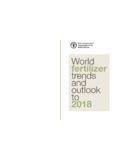Transcription of UNITED KINGDOM - OECD
1 3. DEVELOPMENTS IN INDIVIDUAL OECD AND SELECTED NON-MEMBER ECONOMIESOECD economic outlook , VOLUME 2018 ISSUE1 PRELIMINARY VERSION OECD 2018233 UNITED KINGDOME conomic growth is projected to remain modest at in 2018 and in 2019,owing to high uncertainties about the outcome of Brexit negotiations. There is little slackin the economy following years of strong growth, and unemployment is projected toremain below 5%. Inflation is projected to fall gradually to slightly above the 2% target ofthe central bank by the end of inflation above target but still large uncertainties, monetary policy is projectedto normalise at a very gradual pace. Additional fiscal consolidation is planned for thisyear and next. While this is appropriate given the economic outlook , the authoritiesshould stand ready to further increase productivity-enhancing measures on investmentif growth weakens significantly ahead of Brexit. Greater spending on education andtraining of low-skilled workers would increase productivity and enhance an economic point, Brexit negotiations should aim at preserving open trade withthe European Union and high access for financial services to EU growth remains constrained by Brexit-related uncertaintiesThe pace of domestic activity has been moderate, despite stronger export growth onthe back of faster world trade current account deficit has narrowed somewhat,as the sterling depreciation automatically increased the sterling value of income earned onUK s foreign currency has fallen in recent months, but has remained persistently above target sinceFebruary 2017.
2 This reflects the lingering effects of sterling s past depreciation and risingglobal commodity prices, which have been passed into retail sales prices. Wages havelately grown at a slower pace than productivity. The main explanation of weak domesticdemand is elevated inflation that has continued to damp real household income growthand consumer spending. Despite high profitability and limited spare capacity, businessUnited Kingdom1. Covers 16 countries that are both euro area and OECD Harmonised :OECD economic outlook 103 2 o y % changes UNITED KingdomEuro area UNITED StatesEconomic growth has eased 4 3 2 101234 20 15 10 5051015202016201720182019Y o y % changes Y o y % changes Consumer price inflation Nominal effective exchange rate Inflation has remained above target3. DEVELOPMENTS IN INDIVIDUAL OECD AND SELECTED NON-MEMBER ECONOMIESOECD economic outlook , VOLUME 2018 ISSUE1 PRELIMINARY VERSION OECD 2018234 UNITED KINGDOM .
3 Demand, output and prices1 2 prices GBP billionGDP at market prices1 Private consumption1 Government consumption Gross fixed capital formation Final domestic demand1 Stockbuilding1 Total domestic demand1 Exports of goods and services Imports of goods and services Net exports1- Memorandum itemsGDP deflator Harmonised index of consumer prices Harmonised index of core inflation2 Unemployment rate (% of labour force) Household saving ratio, gross (% of disposable income) General government financial balance (% of GDP) General government gross debt (% of GDP) General government debt, Maastricht definition (% of GDP) Current account balance (% of GDP) 1.
4 Contributions to changes in real GDP, actual amount in the first column. 2. Harmonised index of consumer prices excluding food, energy, alcohol and tobacco. Source: OECD economic outlook 103 database. Percentage changes, volume(2015 prices) UNITED Kingdom1. Data for the unemployment rate refer to the population aged 16 and over. Data for the labour force participation rate refer to thepopulation aged between 16 and Real average weekly earnings excluding bonuses. Earnings have been deflated by the consumer prices index including owneroccupiers housing :Office for National 2 of labour force % of population Unemployment rate Labour force participation rate The labour market is strong 9496981001021049496981001021042007200920 11201320152017 Index 2007 = 100 Real output per hourReal wages Wages have grown at a slower pace than productivity3.
5 DEVELOPMENTS IN INDIVIDUAL OECD AND SELECTED NON-MEMBER ECONOMIESOECD economic outlook , VOLUME 2018 ISSUE1 PRELIMINARY VERSION OECD 2018235investment growth has been held back by Brexit-induced economic and politicaluncertainty. Housing transactions, mortgage approvals and house prices have weaker growth, the unemployment rate, at , is at its lowest levelsince 1975 and labour force participation has increased. Survey measures of recruitmentdifficulties are above their past averages, which may be explained by the steep fall inimmigration from EU countries and long standing labour-market trends such as skillshortages. Wages have picked up, even though less than could be expected given the tightlabour gradual normalisation of monetary policy is warranted, with fiscal policy providingneeded flexibilityThe Monetary Policy Committee increased interest rates for the first time in a decadein late 2017 as inflation was running well above the target.
6 With inflation still above targetand wage pressures emerging, the Bank of England is projected to continue to raise itspolicy interest rate and start shrinking its balance sheet, but only very gradually, assignificant uncertainties remain. Clear communication is essential to prevent structural budget deficit is expected to decline to around of GDP this year andfurther consolidation of just over of GDP is planned over 2018 and 2019 (based onchanges in the underlying primary balance). Fiscal targets are expected to be met withlarge margins. After a peak during this fiscal year, the public debt-to-GDP ratio is projectedto edge down gradually over 2018 and 2019. The authorities should keep identifyingproductivity-enhancing fiscal initiatives on investment that could be implemented swiftly,such as spending on repair and maintenance, should growth weaken significantly ahead ofBrexit. Priority should also be given to greater spending on education and lifelong learning,as adults have lower literacy and numeracy skills than the OECD average and thepercentage of young people with weak basic skills is particularly high.
7 This could boostproductivity, wages and job is projected to stabilise at a weak rateEconomic activity is set to grow at less than 1 per cent in 2018-19, as the March 2018agreement on the transition period only partially dissipates the uncertainty about the finaloutcome of Brexit negotiations. A tighter monetary stance and the unwinding of last year ssterling depreciation are expected to help bring inflation closer to target, despite highergrowth in pay settlements this year. The unemployment rate is anticipated to edge upgradually, in the context of projected slow economic growth. The major risk for theeconomy is the uncertainty surrounding Brexit. If high uncertainty persists, the drag oncapital expenditure could intensify as businesses delay plans further. By contrast, deferredplans may be brought forward if businesses gain clarity about future trading arrangements,pushing up investment growth in the short run.
8 In addition, prospects of maintaining theclosest possible economic relationship with the European Union would lead tostronger-than-expected economic growth.














